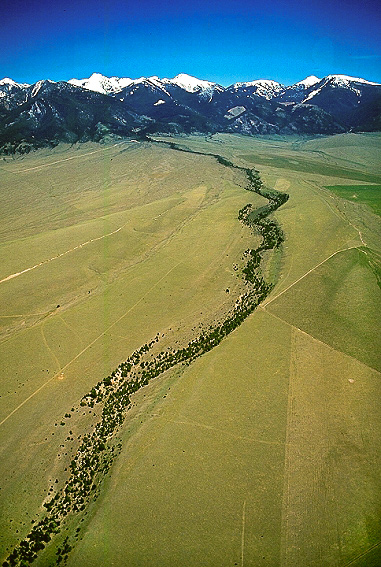We proceeded on and passed a large beautiful bottom,” wrote Pvt. Joseph Whitehouse on 2 August 1805, “and Prairies lying on both sides of the River.” On each side of the valley, Sergeant Gass observed, “there is a high range of mountains . . . with some spots of snow on their tops.”
The Jefferson River was still “crouded with Islands Sholey [shallow] rapid & clear,” according to Clark. Coming ashore on 3 August to look for Indians, he found a barefoot track and followed it, discovering “that the person had ascended a point of a hill from which his camp of the last evening was visible.” Apparently, unidentified Indians had been shadowing them off and on for more than two weeks, but there were as yet no clues as to whether the sign was ominous or hopeful.
Meanwhile, Lewis and his small detail continued southward overland on the opposite side of the river, in advance of Clark and the dugout canoes. They were still anxiously hoping to find Sacagawea‘s people and buy horses from them so they could renew their westward trek, but the seemingly furtive Indians continued to elude them.
When Clark and his detachment passed through here again eleven months later, northwest winds chilled by the snowcapped mountains “rendered it very difficuelt to keep the canoes from running against the Shore.”
In the background are the Tobacco Root Mountains. Twenty of their jagged glaciated summits rise above ten thousand feet. the upland slopes of thin, rocky soil are green only for a few weeks in early spring. The dark green areas on the slope at the right of the photo are hayfields, irrigated from the little creek at center. The lines across the plain are farm lanes.
From Discovering Lewis & Clark from the Air
Photography by Jim Wark
Text by Joseph Mussulman
Reproduced by permission of Mountain Press

